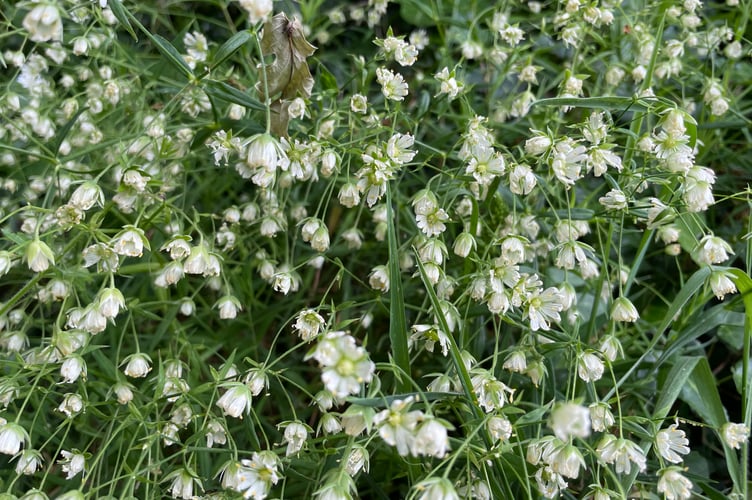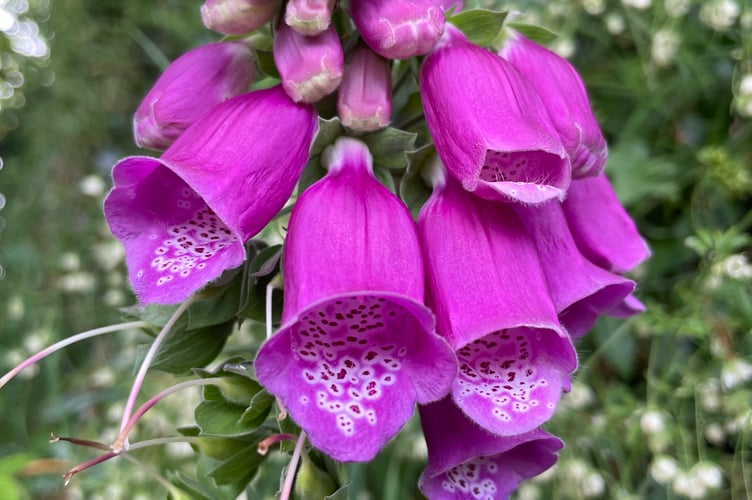When I see the stitchwort going to seed in the hedgerows at this time of year, it always reminds me of Nan telling me about one morning when I was about 5 or 6 years old, and she was walking me to school. Apparently we were ‘very’ late because … I had insisted on trying to ‘pop’ all the seed-heads of the stitchwort on the way. She would then recall another day where we were even later – when I had apparently insisted on walking the whole mile to school – backwards. Neither of those incidents surprise me, but I still don’t know how I got away with it.
Anyway – back to stitchwort. Stitchwort got its name as the plant was traditionally used as a herbal medicine to alleviate the pain felt in your side during exercise - called a stitch.

Some say that if you pick greater stitchwort, you will cause a thunderstorm, and in some areas, it was believed that greater stitchwort was the property of the pixies and picking it would anger them. Goodness knows what ‘popping’ it did to the pixies – but it didn’t seem to anger my Nan.
I am still making the most of my and Yogi’s sniffari’s to take notice of what is in the hedgerows and verges. My wing-dog is nearing 16 now and in her dotage, our walks have become very slow and much treasured, as is every single day together.
My recent ‘Awww, look that’ moment involved a foxglove whose flowers have grown in a cluster rather than in the traditional long spikes. I love the fact that folklore has it that foxgloves got their name as foxes wore the pink flowers as gloves to muffle their steps and allow them to creep up on their prey.

I never cease to be amazed by the wonderful things we have in Wales and have recently been reminded of one of them.
The Welsh Ape and Monkey Sanctuary are currently appealing for what they call ‘scatter food’ (dried fruit and nuts) for their ‘special rescued residents’. The Sanctuary, situated between Caehopkin and Abercraf in Powys, rescues and provides a home for all sorts of unwanted animals, especially primates, but they are not all who benefit from a safe, loving, forever home. Other rescued animals include African savannah cats, meerkats, wolf dogs, horses, donkeys, and pigs. All in all you can meet around 200 animals, as owners, Graham and Jan describe as, “All are equally important members of our extended family.’
It is important to remember that it is a Sanctuary and not a zoo, with animals being rescued from zoos and laboratories, both here and overseas and some of their stories will fracture your heart. As they are no longer equipped for survival in the wild, their lives are now made as enjoyable and stress free as possible by Graham, Jan and their incredible team. It is a truly a labour of love and any help you can give will be very much appreciated by the animals and the humans who care for them alike.
The Sanctuary welcomes visitors all year round (and without appointments) but ask that you please understand that dogs are unable to go into the site as they may upset the ‘residents’.
You can also making donations on-line, or on-site during a visit, adopting an animal (great presents) and also contributing food and other necessary items which can be found on their Amazon Wishlist.
You can find more details on their website www.ape-monkey-rescue.org.uk




Comments
This article has no comments yet. Be the first to leave a comment.